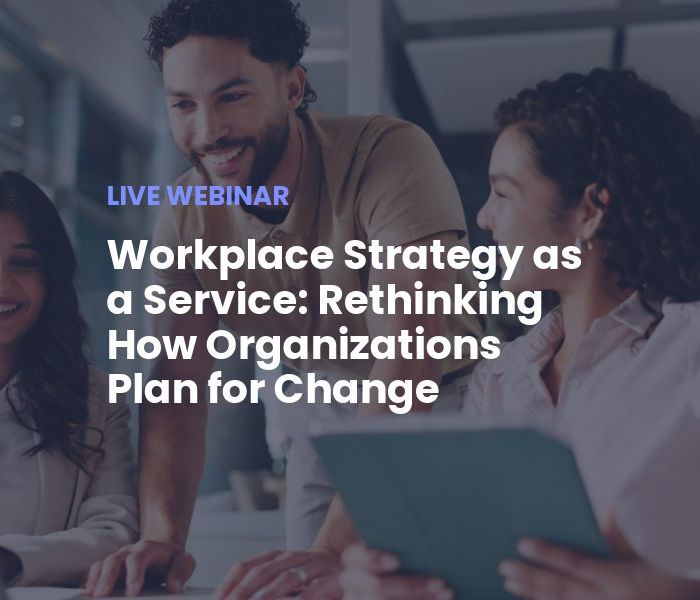Preparing a building for re-entry after a pandemic requires careful consideration and preparation of aspects that impact health and well-being of occupants. In a time of pandemic, this preparation includes but goes beyond traditional pre-return building risk assessments. Below are five things facility managers need to consider in their planning for employees re-entering the workplace in a post-pandemic world:
1. SOCIAL DISTANCING AND DENSITY
Circulation paths have historically provided the primary methods for employees to get to their workspace locations while also offering valuable opportunities for employee interaction. Modern open office environments invite interaction through a variety of open spaces connected by common circulation areas that encourage impromptu collaboration and contribute to the overall energy flow of a workspace. In the pandemic era, however, this represents challenges. Organizations will be tasked with limiting employee interaction while managing and enforcing social distance to create the best possible environment to ensure employee health.
As a starting point, consider first the various hurdles of getting employees to and from their actual workspace while decreasing the chances for actual physical interaction. Areas of concern include vertical transportation such as elevators (lifts), stairs and escalators, as well as areas of heavy employee traffic such as breakrooms, entry ways and exits, public reception and lobbies.
Enabling safe distancing for entering and exiting buildings requires careful planning of traffic flow and occupant density. The building, floor and individual workspace level of detail may need to be explored to provide the greatest chance of success at creating a safe space for occupants.
2. FLEXIBLE WORK STRATEGIES
Many organizations see the return to work as a gradual process, allowing people to come into the office in shifts or based on need. Agile work strategies, also known as hoteling or work-switching, are emerging as a compelling and practical approach to workplace re-entry. A flexible desk management strategy, where some employees have assigned workstations and others select workstations as needed, allows facility managers to reduce occupant density as well as rotate available floors, zones or workstations to allow for proper cleaning between uses. Before the COVID-19 pandemic, approximately 13% of employees worked remote some of the time. According to Gartner, remote work will increase across many industries after stay-at-home orders are lifted, citing almost three-quarters of CFOs who plan to transition at least 5% of their office workers into full-time remote employees. One in 25 CFOs will leave 50% of the workforce working from home.
Employees are also advocating for flexible work options. Having experienced the convenience of working from home, 50% of employees now believe they would be equally or more productive at home, according to the recent Gartner survey. Some employees may not have the option to return to the workplace due to widespread school closures through the end of the school year. More vulnerable populations may be fearful about exposure to COVID-19; offering extended work from home options can build employee trust and confidence. Facility managers who partner with HR in both strategy and communication will be most effective in securing employee morale, loyalty and engagement.
Flexible desk strategies also offer the opportunity to evaluate facility usage and find opportunities to condense or consolidate. Some organization may look to real estate optimization strategies to make up some of the economic losses occasioned by the pandemic. In the future when distancing is less of a concern, organizations can change their occupant densities, minimizing the risk in reducing the portfolio.
3. SANITATION & BUILDING WELLNESS
Facility workers and maintenance crews are finding themselves on the front lines of COVID-19 prevention as they work to keep workplaces clean, safe and sanitary. Many employees have valid concerns about the risk of being exposed to this pandemic in the workplace. The responsible management of building sanitation with visibility and accountability will be essential to establishing employee trust and confidence.
Sanitation efforts must be both preventative and reactive. Regular cleaning schedules and detailed task lists for common areas combined with workstation utilization reports will help maintenance teams focus on high-traffic areas while ensuring individual workstations are disinfected every time they are used. Daily maintenance work should be tracked and documented so the facility team has accountability to the organization that their workplace is being safely and responsibly maintained.
4. CONTAMINATION
While many aspects of the COVID-19 pandemic and the challenge of preparing for a return to the workplace are new, some are familiar and there are protocols and best practices to address them. Contamination is one such aspect.
In a work setting, contamination is the presence of a toxic or polluting substance, or infectious agent, on the human body surface, or on clothes, furniture, equipment, surfaces, or other inanimate articles and substances such as water, milk, and food. Contamination poses risks to people and work activities. Unguarded proliferation of contamination can quickly lead to outcomes highly detrimental to employees, their families, and the organization. Organizations need a plan to anticipate and respond to contamination events.
5. MONITORING AND MAINTENANCE
During the phased implementation of a return to a healthy, safe post-pandemic workplace, it’s critical to monitor the status of key performance indicators (KPIs) so that you can validate the success of the measures you have taken, ensure compliance, identify deficiencies, and evaluate the impact of any subsequent changes to the plan.
Data for monitoring may be derived from existing or available but otherwise untapped data sources, and it may come from new monitoring devices such as environmental sensors. But monitoring KPIs is just table stakes; you also need to implement analytics to deliver insights into the KPIs and drive decisions
Workplace management solutions can highlight areas needing modification to ensure compliance with regulatory guidelines as well as safeguarding employee health. Real-time workplace management data, visual tools and analytics can help model what-if scenarios, shore up working plans and help facilities management leaders come up with plans that accomplish the right balance between employee safety and effective utilization.
Download the Safe Space Playbook to see the full facility manager checklist >










